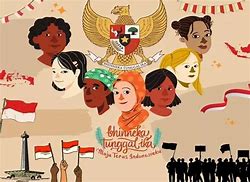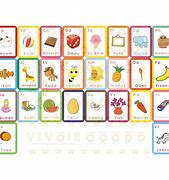
Bhinneka Tunggal Ika Diciptakan Oleh Siapa
Indonesian national motto
Bhinneka Tunggal Ika is the official national motto of Indonesia. It is inscribed in the national emblem of Indonesia, the Garuda Pancasila, written on the scroll gripped by the Garuda's claws. The phrase comes from Old Javanese, meaning "Unity in Diversity," and is enshrined in article 36A of the Constitution of Indonesia. The motto refers to the unity and integrity of Indonesia, a nation consisting of various cultures, regional languages, races, ethnicities, religions, and beliefs.
The phrase is a quotation from an Old Javanese poem Kakawin Sutasoma, written by Mpu Tantular, a famous poet of Javanese literature during the reign of the Majapahit empire in the 14th century, under the reign of King Rājasanagara (also known as Hayam Wuruk).
Translated word for word, bhinnêka is a sandhi form of bhinna meaning "different"; the word tunggal means "one" and the word ika means "it". Literally, Bhinneka Tunggal Ika is translated as "It is different, [yet] it is one". Conventionally, the phrase is translated as "Unity in Diversity",[1] which means that despite being diverse, the Indonesian people are still one unit. This motto is used to describe the unity and integrity of Indonesia which consists of various cultures, regional languages, races, ethnicities, religions, and beliefs. As head of the Faculty of Philosophy of Gadjah Mada University, Rizal Mustansyir, writes, "the motto of Bhinneka Tunggal Ika explains clearly that there is diversity in various aspects of life that makes the Indonesian nation a unified nation."[2]
The phrase originated from the Old Javanese poem Kakawin Sutasoma, written by Mpu Tantular a famous poet of Javanese Literature during the reign of the Majapahit empire sometime in the 14th century, under the reign of King Rājasanagara, also known as Hayam Wuruk.[3] The Kakawin contains epic poems written in metres. The poem is notable as it promotes tolerance between Hindus (especially Shivaites) and Buddhists.[4]
The phrase Bhinneka Tunggal Ika was published in an article entitled Verspreide Geschriften which was written by a Dutch linguist orientalist Johan Hendrik Casper Kern. Kern's writings were later read by Mohammad Yamin, who then brought the phrase to the first Investigating Committee for Preparatory Work for Independence (BPUPK) session, between 29 May to 1 June 1945.[5]
The motto Bhinneka Tunggal Ika was later incorporated into the state emblem, the Garuda Pancasila. Reporting from the Directorate General of Culture of the Republic of Indonesia, the state symbol was designed by Sultan Hamid II and announced to the public on 15 February 1950.[6]
The phrase, along with Pancasila as national emblem and 20 other articles, is officially included into the Constitution of Indonesia after the second amendment of the constitution was ratified on People's Consultative Assembly (MPR) parliamentary session in 7–18 August 2000.[7][8]
This quotation comes from canto 139, stanza 5. The full stanza reads as follows:
Rwāneka dhātu winuwus Buddha Wiswa, Bhinnêki rakwa ring apan kena parwanosen, Mangka ng Jinatwa kalawan Śiwatatwa tunggal, Bhinnêka tunggal ika tan hana dharma mangrwa.
It is said that the well-known Buddha and Shiva are two different substances. They are indeed different, yet how is it possible to recognise their difference in a glance, since the truth of Jina (Buddha) and the truth of Shiva is one. They are indeed different, but they are of the same kind, as there is no duality in Truth.
This translation is based, with minor adaptations, on the critical text edition by Soewito Santoso.[1]
This idea is a constant theme throughout Mpu Tantular's writings and can also be found in his other writing, the Kakawin Arjunawijaya, canto 27 stanza 2:[9][10]
ndan kantênanya, haji, tan hana bheda saṅ hyaṅ hyaṅ Buddha rakwa kalawan Śiwarājadewa kālih samêka sira saṅ pinakeṣṭi dharma riṅ dharma sīma tuwi yan lêpas adwitīya
Clearly then, Your Majesty, there is no distinction between the Deities: the hyaṅ Buddha and Siwa, the lord of gods, both are the same, they are the goals of the religions; in the dharma sīma as well as in the dharma lêpas they are second to none.
Bhinneka Tunggal Ika adalah moto atau semboyan bangsa Indonesia yang tertulis pada lambang negara Indonesia yaitu Garuda Pancasila. Semboyan negara ini menggambarkan kondisi Indonesia yang mempunyai banyak keragaman suku, budaya, adat dan agama namun tetap menjadi satu bangsa utuh.[1] Frasa ini berasal dari bahasa Jawa Kuno yang artinya adalah “Walaupun berbeda-beda tetapi tetap satu jua”.[2]
Indonesia merupakan negara kepulauan terbesar di dunia, dengan demikian sangat wajar apabila mempunyai banyak suku, agama, ras, dan antar golongan. Keragaman tersebut hidup saling menghormati dan menghargai dalam semangat Bhinneka Tunggal Ika.[3]
Kata bhinnêka berasal dari dua kata yang mengalami sandi, yaitu bhinna 'terpisah, berbeda' dan ika 'itu'. Kata tunggal berarti 'satu'. Secara harfiah, Bhinneka Tunggal Ika secara eksplisit dapat diartikan "Berbeda itu tetap satu", yang bermakna meskipun dalam aneka keberanekaragaman — pada hakikatnya bangsa Indonesia tetap merupakan satu kesatuan utuh nan kokoh. Semboyan ini digunakan untuk menggambarkan persatuan dan kesatuan Bangsa dan Negara Kesatuan Republik Indonesia yang terdiri atas beraneka ragam adat, istiadat dan budaya, serta bahasa daerah, ras, suku bangsa, agama dan serta kepercayaan.
Kalimat ini merupakan kutipan dari sebuah kakawin Jawa Kuno yaitu kakawin Sutasoma, karangan Mpu Tantular sekitar abad ke-14, di bawah pemerintahan Raja Rājasanagara, yang juga dikenal sebagai Hayam Wuruk Maharaja ke-4 Majapahit yang memerintah tahun 1350–1389, Kakawin ini istimewa karena mengajarkan toleransi antara umat Hindu Siwa dengan umat Buddha.[4]
Tujuan dari Bhinneka Tunggal Ika adalah untuk mengembangkan motivasi dan menghargai keragaman. Tanpa wawasan tersebut, akan sulit untuk memajukan kedaulatan dan kemerdekaan nasional Indonesia.
Cita-cita tersebut menjadi landasan nasionalisme masyarakat Indonesia. Tujuan dari kebangkitan nasionalis yang dipimpin Bhinneka Tunggal Ika adalah untuk menanamkan loyalitas dan dedikasi pada masyarakat dan bangsa.[1]
Kutipan ini berasal dari pupuh 139, bait 5. Bait ini secara lengkap seperti di bawah ini:
Rwāneka dhātu winuwus Buddha Wiswa, Bhinnêki rakwa ring apan kena parwanosen, Mangka ng Jinatwa kalawan Siwatatwa tunggal, Bhinnêka tunggal ika tan hana dharma mangrwa.
Konon Buddha dan Siwa merupakan dua zat yang berbeda. Mereka memang berbeda, tetapi bagaimanakah bisa dikenali? Sebab kebenaran Jina (Buddha) dan Siwa adalah tunggal Terpecah belahlah itu, tetapi satu jugalah itu. Tidak ada kerancuan dalam kebenaran.
Terjemahan ini didasarkan, dengan adaptasi kecil, pada edisi teks kritis oleh Dr. Soewito Santoso.[5]
Tarian dengan peserta berpakaian adat suku-suku di Indonesia.
Arak-arakan dengan tulisan "Bhinneka Tunggal Ika" menampilkan anak-anak dengan baju adat berbagai suku di Indonesia.
Penyanyi-penyanyi mengenakan pakaian adat di Indonesia
Anak-anak berpakaian adat daerah, umumnya digunakan untuk mengekspresikan keanekaragaman Indonesia.
Karnaval baju daerah untuk menunjukkan keberagaman budaya.
Unity in Diversity, the official national motto of Indonesia
From Simple English Wikipedia, the free encyclopedia
Bhinneka Tunggal Ika (English: "It is different, [yet] it is one") is Indonesia's official national motto. It's written on the emblem of Indonesia, called the Garuda Pancasila. The phrase means "Unity in Diversity" in Old Javanese. This motto is also in Indonesia's Constitution, in article 36A. It talks about Indonesia being united and whole even though it has many cultures, languages, ethnicities, religions, and beliefs.[1]
The words come from an Old Javanese poem called Kakawin Sutasoma, written by Mpu Tantular, a famous poet in Javanese Literature during the time of the Majapahit empire in the 14th century. King Rājasanagara, also known as Hayam Wuruk, was ruling then.[2]
FOSTERING SPECTACULAR COLLABORATIONSTO CELEBRATE THE INDONESIAN WAY OF LIFE
Determined to keep the legacy alive, a bigger stage is set for the 2024 campaign of Powerful Indonesia: Bhinneka Tunggal Ika. A series of programmes are curated to celebrate the Indonesian way of life encompassing spirituality and inner wisdom, equal opportunity, unity in diversity, one common vision for the future, and igniting the fighting spirit for generations to come.
Thoughtfully curated programmes are to be presented quarterly, highlighting partnerships with people across disciplines, cultural-diversity guest experiences, craftsmanship, sustainable activations, and equal opportunity for ones with unique abilities. It is our commitment to ensure every guest feels the essence of Indonesia and recognises the power of unity in diversity through the performed experiences.
Powerful Indonesia: Bhinneka Tunggal Ika is beyond merely a campaign, it is our tribute to the majestic nation of Indonesia.
Recreational facility, Miscellaneous
Indonesia is home to a kaleidoscope of people and cultures whose history stretches back thousands of years. It is one of the most diverse countries on the planet with over 17,024 islands, 38 provinces, 718 languages and 360 ethnic groups from Sabang in Sumatra to Merauke in Papua. Despite the immense differences, the country's diverse cultures, traditions, and beliefs are united in harmony, reflecting the national motto of 'Bhinneka Tunggal Ika', which translates to Unity in Diversity.
Since 2019, The Apurva Kempinski Bali has been dedicated to showcasing Indonesia's cultural heritage as part of the guests' experience. In 2024, we continue to honour the belief of Unity in Diversity by shining the spotlight on the distinctive essence of Indonesia's seven main regions: Sumatra, Nusa Tenggara, Java, Kalimantan, Sulawesi, Maluku, and Papua.
A series of bi-monthly programs have been curated as an integral part of the guests' journey in exploring Indonesia while staying in the resort. The tailored experiences include the arrival rituals unique to each region, their cuisines, indigenous treatments, mystical stories, traditional games, and craftsmanship.
Restaurant, Restaurant, Dining Area, Dining, On-Site
Throughout 2024, The Apurva Kempinski, with its talented Michelin-starred background chefs, will continue its journey to become Bali's leading dining destination with a full commitment to sustainability. A harmonious balance of diverse flavours, textures, and artisanal presentation portrays the culinary mastery of each chef, presented in every dining venue throughout the resort. With food as a medium for storytelling, our world-class chefs ensure each dish tells a unique narrative, engages the senses, and captivates diners' imagination.
Local ingredients and flavours are at the centre of The Apurva Kempinski Bali's culinary arts. Most ingredients are sourced locally, including from our Rooftop Hydroponic Garden and the regenerative farm in collaboration with the Karangasem community in the north of Bali. We are also on a mission to bring more awareness and preserve Indonesia’s forgotten biodiversity, especially those that once were popular during the Majapahit Empire era. All of which, while ensuring to minimise food waste with efforts and efficient practices across all kitchens.
Beyond transforming Nusa Dua into a dining destination in Bali with our iconic restaurants, the Apurva Spa has become a destination spa in the area that combines time-honoured rituals and skilful techniques to create the most immersive spa experience in Bali.
The traditions of ancient Indonesian wellness began more than 2,000 years ago and have evolved through generations, passing down ancient philosophy, traditional medicine, beauty rituals, and processions. Embodying this holistic healing philosophy, Apurva Spa ensures the harmony between inner and outer beauty in every treatment.
The Apurva Spa's signature treatments are curated to care for the changing physical and mental needs as one progresses through the four stages of life; adolescence, adulthood, married life and post-adulthood. Another highlighted treatment is Awakening the Chakra Spirit, a holistic treatment featuring different types of essences, oils, and scrubs.
Ultimately, in the spirit of celebrating Indonesia, a range of treatments, rituals, and nourishments have been prepared to highlight unique techniques, herbal remedies, and healing wisdom from Sumatra, Nusa Tenggara, Java, Kalimantan, Sulawesi, Maluku, and Papua.
Recreational facility, Miscellaneous
Along with the rapid technological advancement, traditional games have become less popular entertainment for the younger generations and are increasingly fading from existence. With the purpose of both entertaining and educating the little ones, the Powerful Indonesia: Bhinneka Tunggal Ika programme presents a series of culturally-themed traditional games and storytelling at Jalak Family Club. Each game and story creates a fascinating interactive experience, introducing the family history of Indonesia to the next generation.
Miscellaneous, Miscellaneous
GALLERY OF ARTS: BHINNEKA TUNGGAL IKA LONTAR EXHIBITIONAT PENDOPO LOBBY
Since the 20th century, the profound concept of Bhinneka Tunggal Ika has been a cornerstone of Indonesian philosophy and the nation's motto. Originating from the Sutasoma manuscripts written by Mpu Tantular in the era of the Majapahit Empire, the phrase symbolises 'Unity in Diversity', with 'Bhinneka' signifying diversity and 'Tunggal Ika' representing one unity. Continuing its path as a philosophy of life passed down through generations, let's dive into the legacy that connects past, present, and future.
The Apurva Kempinski Bali with Samsara Living Museum proudly showcases these ancient manuscripts at 'the Gallery of Art' from 3 April to 30 May 2024 in the Pendopo Lobby.
GALLERY OF ART: GAWAI DAYAK FESTIVAL BY STEPHANE SENSEY
Stephane Sensey is a French photographer raised in Biarritz in the south west of France. Moved to Bali in 2004, when he began to travel across the archipelago to capture the soul of the images he craved. Stephane’s evocative and sometimes extraordinary images capture the power of Indonesia on camera, and collaborating with him brings great perspective to The Apurva Kempinski Bali’s brand programme. This year, we proudly present the ‘The Gawai Dayak Festival’ photography series to the Gallery of Art Exhibition. The annual celebration for the Dayak people in Kalimantan is a special occasion that holds a significant place in the hearts of the Borneo tribe, where traditional games, art performances, and parades fill the festivity of gratitude.
Available from June to August 2024 in the Pendopo Lobby.
HARMONY IN MOTION: PANCHA MAHABHUTA EXHIBITION BRINGS FIVE ELEMENTS TO LIFE AT THE APURVA KEMPINSKI BALI
In the spirit of commemorating the 79th year of Indonesia's Independence Day and as part of the 2024 Powerful Indonesia: Bhinneka Tunggal Ika programme, this year's celebration is marked by the opening of the Gallery of Art 'Pancha Mahabhuta' Exhibition. Open to the public from 17 August to October 2024 at Pendopo Lobby, this award-winning hotel presents an exclusive exhibition that explores the concept of the five elements: water, fire, air, space, and earth, resonating with Indonesia’s cultural heritage captured through the art of esteemed visual artists I Made Griyawan and Teja Astawa.



